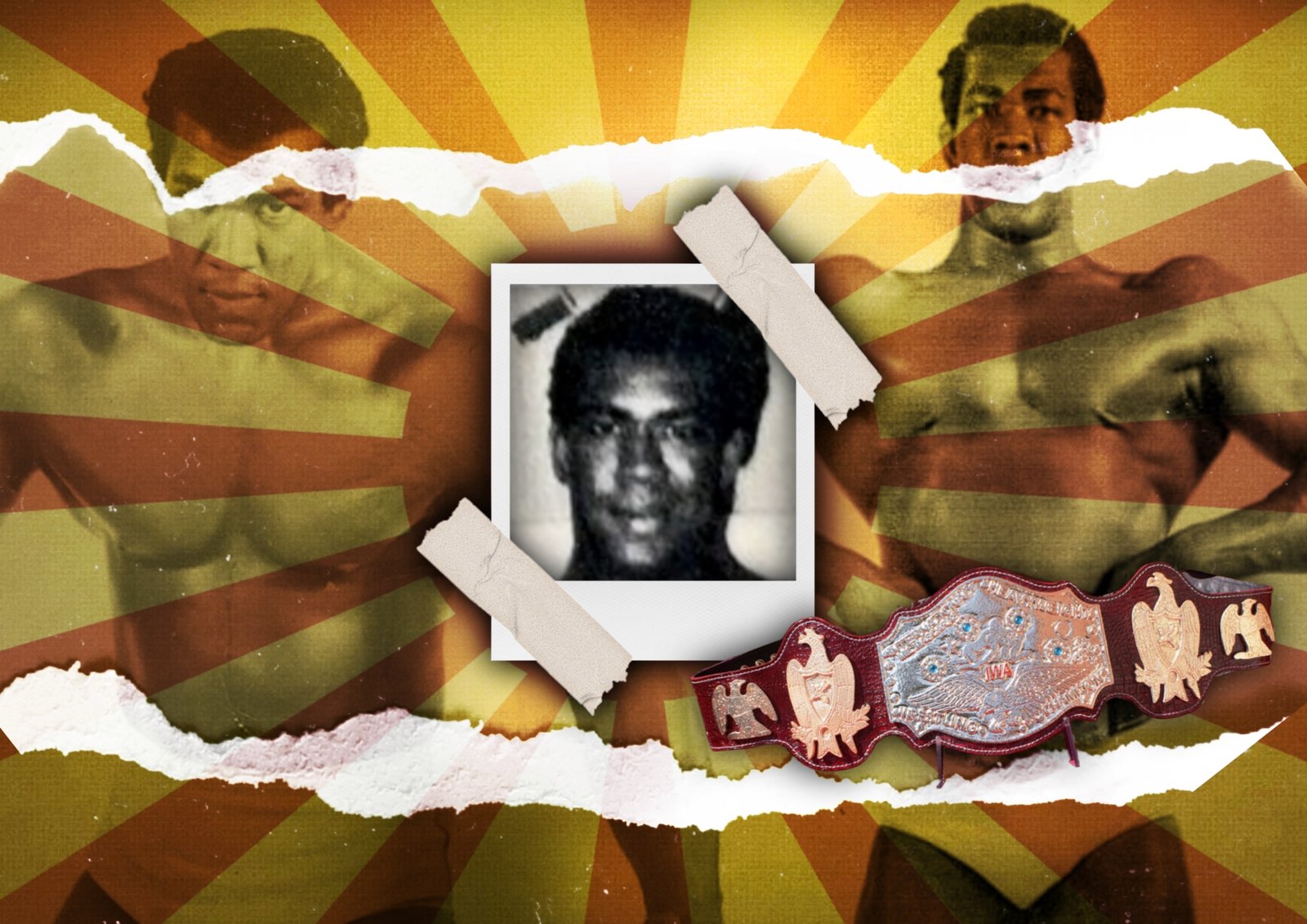Teddy Herbert: A Legacy Almost Lost to Time

Teddy Herbert: A Legacy Almost Lost to Time

By: Mark Chetcuti
Few people would fathom that a legend of professional wrestling could go forgotten these days with the immense proliferation of popularity and media coverage of professional wrestling, but apparently that is possible with the name of Teddy Herbert.
Herbert was the son of a noble judge in Trinidad. Originally, he had set his sights on the world of bodybuilding, often working hard for it in the gym. Later on in life he was scouted in a gym by his trainer who offered him an opportunity to have a second career as a professional wrestler.
During this time, he became the protege of Ray “Golden” Apollon – noted as one of Trinidad’s finest wrestlers – who taught Herbert the catch-as-catch-can style. He studied the sport with Apollon, reading an wrestling encyclopedia that he passed to his students at his wrestling school. Herbert gradually became peers with names like Billy Robinson, Dusty Rhodes, Rusher Kimura, Verne Gagne, Tiger Jeet Singh, and Mil Mascaras during his time as a wrestler.
He had declined an offer from Vince McMahon Sr. to work for the WWWF as he sat in his office, but later on ended up wrestling for Verne Gagne as part of the AWA, where he feuded with “The American Dream” Dusty Rhodes. Herbert was discovered by Isao Yoshihara, President of the International Wrestling Enterprise (IWE), who brought him over to Japan as part of AWA and IWE’s working agreement together.
While he was living in Japan he was given the name of Taro Kuroshio, where he rolled on mats backstage with Karl Gotch and Billy Robinson, and fought against Andre Roussimoff prior to his rise as a star under the name Andre the Giant. Herbert was a tall man; billed at 6’8 and weighing around 260 lbs. In Japan, he learned both judo and karate, picking it up during his two years living there. Herbert was one of the first foreign wrestlers to have gone through the dojo system before making their debut in Japan. Before the names of Kenny Omega, 2 Cold Scorpio, Prince Devitt and Jay White went through the Japanese dojos, there was Teddy Herbert.

Although TV was not a new invention in Japan in the 70’s, with most regular broadcasts starting in 1950 after World War 2, most of the film reel strips that were used to record programming were taped over in order to reuse expensive technological equipment that stored the footage. Because of this cost-cutting measure, many television shows from the period were lost to time. While performers such as Karl Gotch, Andre the Giant and Billy Robinson have footage that still exists today, Teddy Herbert’s contributions were often left unknown as the remaining tapes of his matches were recorded over. It took digging into the roots of history to learn more about Herbert’s history, not only from himself, but also from newspaper articles around the time, from the 1960’s and 70’s.
Herbert grew ill after about a decade of wrestling around the world including in America, Canada, Japan, England, Germany, and Malaysia. He suffered from kidney problems, and was forced to retire from bodybuilding and professional wrestling, having to be put on dialysis later on in life to help him survive. In November 2012, he passed away on the hospital bed during open heart surgery and was cremated. At his funeral, I wrote his eulogy, which is currently archived in Canada.
His knowledge was passed down to his students that attended his dojo in Canada, Ringmasters Pro Wrestling. Inside the school hung vintage puroresu photographs on the wall of Herbert’s time as a wrestler. His students, who practiced in both the youth class and adult class, continue to wrestle in the independent wrestling scene today, with a burning desire to show the world what Herbert had taught them.



